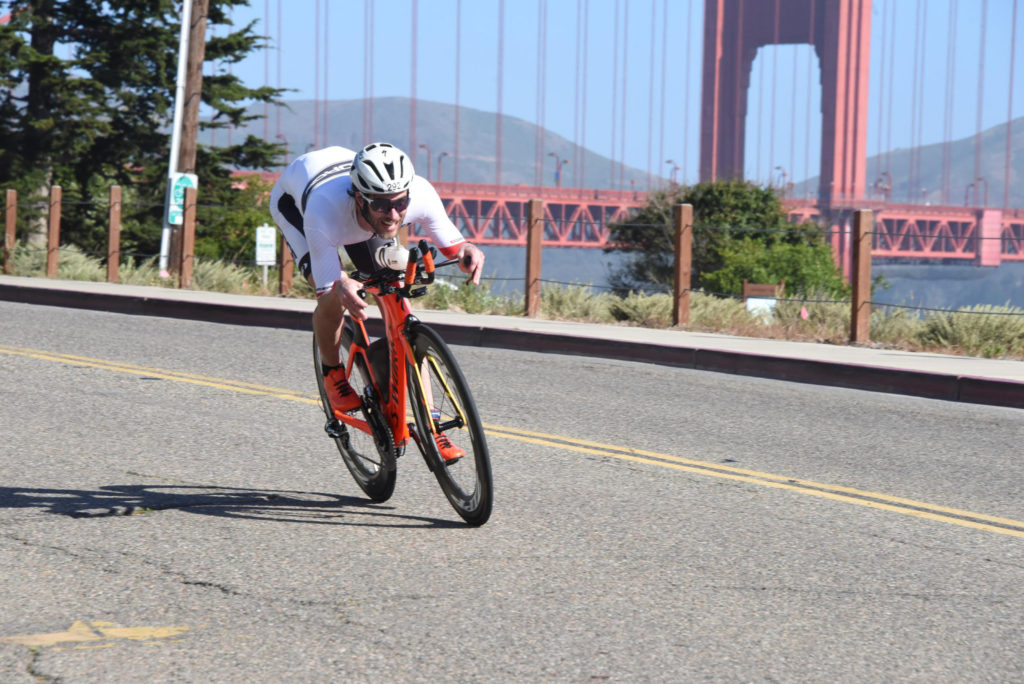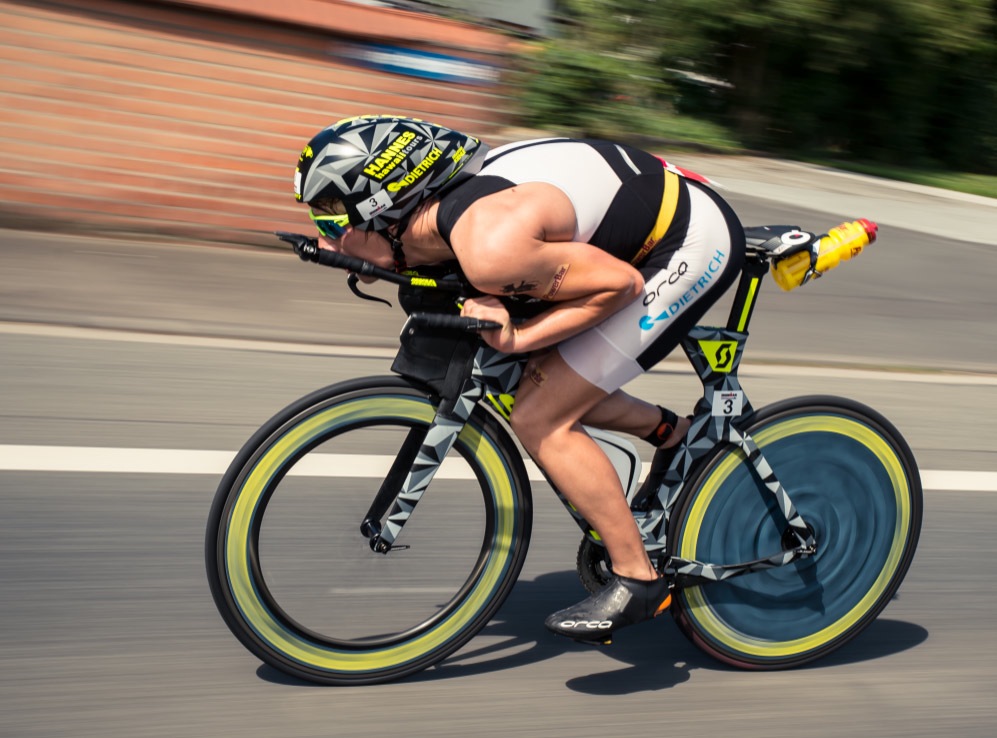I remember my first time racing on the Big Island (Ironman Kona 2010). The most memorable part of the race was nearly crapping my pants from fear when I was descending from Hawi (one gust blew me from the middle of the road, across the rumble strip, onto the shoulder!) Here are some tips for those of you who will be riding on the Big Island for the first time at Honu 70.3 this weekend.
Sebastian Kienle showing the technique he used to crush the descent from Hawi.
The last few times I’ve done the ride down from Hawi (where the crosswinds can be insane), the winds have been calm and manageable. But it’s best to expect intense conditions. Keep in mind that bike skills are not my strongest asset and that I’m a bit of a chicken in situations like this, although I prefer to think of it as having a “strong self preservation instinct”. If any readers disagree (or agree) with anything I wrote here, please comment.
- Weight Distribution. You want your butt back but you also want a good amount of upper body weight pressing down on the front wheel (nice distribution of weight). If all your weight is back it leaves your front wheel vulnerable to being blown around. If all your weight is up front, you’ll have less control of the bike while descending.
- Aerobars. At least on my bike the safest place to be is in the aerobars. When you sit up there isn’t enough weight over the front wheel (not to mention you are less aero and presenting a bigger target to the wind to blow you around). And as a multi time Kona podium finisher told me, “once you’re on the horns, you’re stuck there!” You might feel tempted to keep your hands near the brakes, but braking isn’t the solution!
- Pedaling hard at a high cadence is a huge help. It seems to me like every pedal stroke reorients the bike forward. This might really be the #1 tip. But… if you are going so fast that you’re “spun out” (i.e. can’t pedal fast enough so that there is no “slack” in your pedal stroke), then you’re probably better off just leaning into a crosswind while coasting then maybe pedaling hard to reorient yourself if a gust hits.
- Relax! Keep knees and arms relaxed. It’s easier to absorb a disturbance if your body is relaxed. And don’t have a death grip on the extensions!
- When hit by a gust, don’t necessarily fight it so dramatically (sort of tack like a sailboat) On race day at Kona, we have the entire road (but still watch out for other racers). At Honu, there could be cars on the road, so you’ll need to be more aware of what’s happening around you if you decide to use more of the road. But either way, stay loose and don’t overreact to gusts.
- I grip my aerobars a little lower so I don’t slip off them with my sweaty palms going downhill! Because of the humidity, there’s a good chance your hands will be soaking wet.
- Be aero! The more aero you are, the less the wind hits you. Keep your head low.
- Watch out for the “sheltered sections”— there are rock walls / berms that often provide shelter from the winds (but beware, sometimes they just make the wind do weird things, so don’t relax going into them). When you are about to leave the shelter expect a big gust! (I start pedaling hard just before leaving the shelter).
- winds versus gusts: winds are a little stressful (i.e. you need to lean and pull hard to left to fight winds blowing you to the right). If you aren’t used to them, gusts can be scary and unpredictable (wind is blowing right, gust hits you hard and blows you left and it feels like your front wheel jerked 18 inches to the left then a half second later jerked 25 inches right). RELAX and follow the guidelines above. It’s all part of the fun and adventure of racing on the Big Island!
- Watch the person in front of you. Often times you’ll see them get hit by the wind first and get a little warning. If they get blown hard, get aero, lean against the wind, relax and start pedaling!


